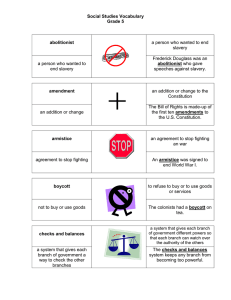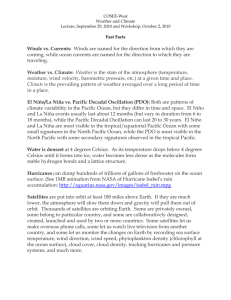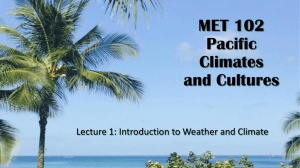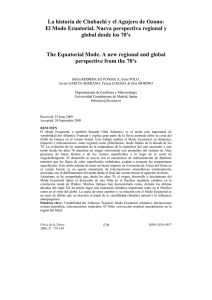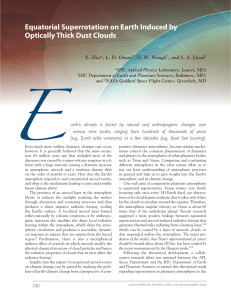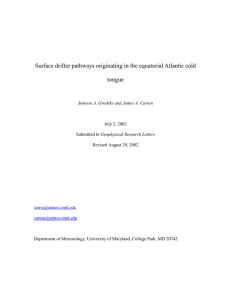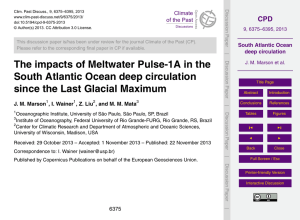SIO 217C: Climate Spring 2014 Climate Variability Discussion Questions
advertisement
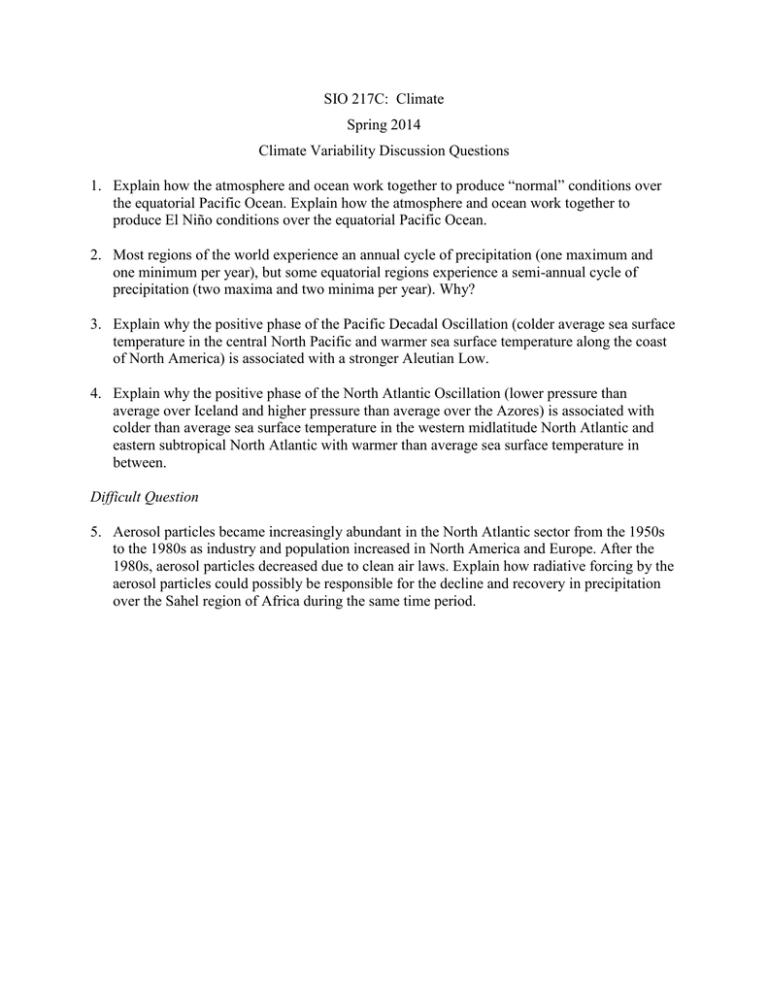
SIO 217C: Climate Spring 2014 Climate Variability Discussion Questions 1. Explain how the atmosphere and ocean work together to produce “normal” conditions over the equatorial Pacific Ocean. Explain how the atmosphere and ocean work together to produce El Niño conditions over the equatorial Pacific Ocean. 2. Most regions of the world experience an annual cycle of precipitation (one maximum and one minimum per year), but some equatorial regions experience a semi-annual cycle of precipitation (two maxima and two minima per year). Why? 3. Explain why the positive phase of the Pacific Decadal Oscillation (colder average sea surface temperature in the central North Pacific and warmer sea surface temperature along the coast of North America) is associated with a stronger Aleutian Low. 4. Explain why the positive phase of the North Atlantic Oscillation (lower pressure than average over Iceland and higher pressure than average over the Azores) is associated with colder than average sea surface temperature in the western midlatitude North Atlantic and eastern subtropical North Atlantic with warmer than average sea surface temperature in between. Difficult Question 5. Aerosol particles became increasingly abundant in the North Atlantic sector from the 1950s to the 1980s as industry and population increased in North America and Europe. After the 1980s, aerosol particles decreased due to clean air laws. Explain how radiative forcing by the aerosol particles could possibly be responsible for the decline and recovery in precipitation over the Sahel region of Africa during the same time period.




